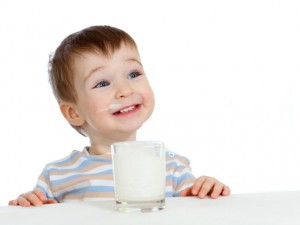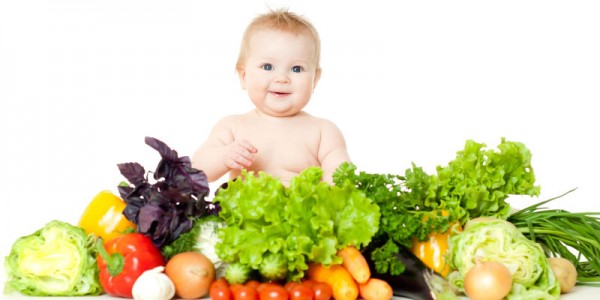The basics for babies
One of VCH’s four strategic goals is to “promote better health for our communities” and since February of last year, we have embraced that goal by working with the Greater Vancouver Food Bank Society (GVFBS) to provide healthier food for babies and young children.
Barbara Crocker, a VCH public health dietitian who has been working with the food bank, says there are “two fronts” of importance with this partnership.
“One, is prevention of iron deficiency anemia because it impacts growth and brain development – we want to protect all of our babies from a low-iron status and that means high-iron solid food starting at six months,” she explains. “The second thing is getting babies to learn and accept the taste and texture of real food – fresh foods. The changes in the foods provided allow babies to experience the taste and texture of a banana, not pureed banana – real bananas, real fish, real chicken and real apples.”
Since February of last year, Barbara other VCH dietitians and dietetic interns have reviewed the Basics for Babies (6 to 18 months) and Kids’ Picks (18 months to 6 years) programs, looking at ways to  improve the nutritional content and the types of food provided. For example, children older than a year in the Basics for Babies program would benefit from receiving whole milk instead of powdered and eating more solid, finger foods (they also created two bags – 6 to 12 months and 12 to 24 months. In the Kids’ Picks program, they discovered that kids over 18 months of age were being offered dried fruit leathers when they should have been getting fresh fruits – and they added nutrient-dense canned salmon and fresh fruit to the mix.
improve the nutritional content and the types of food provided. For example, children older than a year in the Basics for Babies program would benefit from receiving whole milk instead of powdered and eating more solid, finger foods (they also created two bags – 6 to 12 months and 12 to 24 months. In the Kids’ Picks program, they discovered that kids over 18 months of age were being offered dried fruit leathers when they should have been getting fresh fruits – and they added nutrient-dense canned salmon and fresh fruit to the mix.
“It is really gratifying to support the food bank,” Barbara says, “to look at the quality of food and to look at how we can help families access more food and more age-appropriate food.”
She says the early years are a critical time for establishing healthy eating habits to help these children grow, learn and develop to their full potential. This work aligns with VCH’s mission of supporting healthy lives in healthy communities with our partners through care, education and research.
Creating a healthier community
Kay Thody, communications director for the GVFBS says this personifies the importance of collaboration, particularly, utilizing the expertise of the two groups to create a healthier – and happier – community.
“We recognized an opportunity to leverage the nutritionists’ experience and expertise for the betterment of our members,” Kay says. “We are so grateful for their support and the work they have done. We really couldn’t have asked to have better guidance in addressing health issues – than what has been provided by the nutritionists. It has been a very rewarding experience on many levels.”
About education
Diane Collis, manager of the Fresh Choice Kitchens Program at the GVFBS and who worked with the dieticians on the new food bags, says education is key in order to be successful moving forward – equally for those donating food as well as those receiving food.
“Historically food banks have been associated with more of a quantity-based approach, rather than spending time on the quality of food provided,” she says. “We live in one of the most nutrient-rich provinces in the country, and what we want to do is encourage people to come back to basics. Eating well does not have to be expensive, nor does it have to be complicated. In fact the simpler we can all eat, the better. We look forward to the continued collaboration with VCH to expand on the great work that’s being done for our little ones.”


